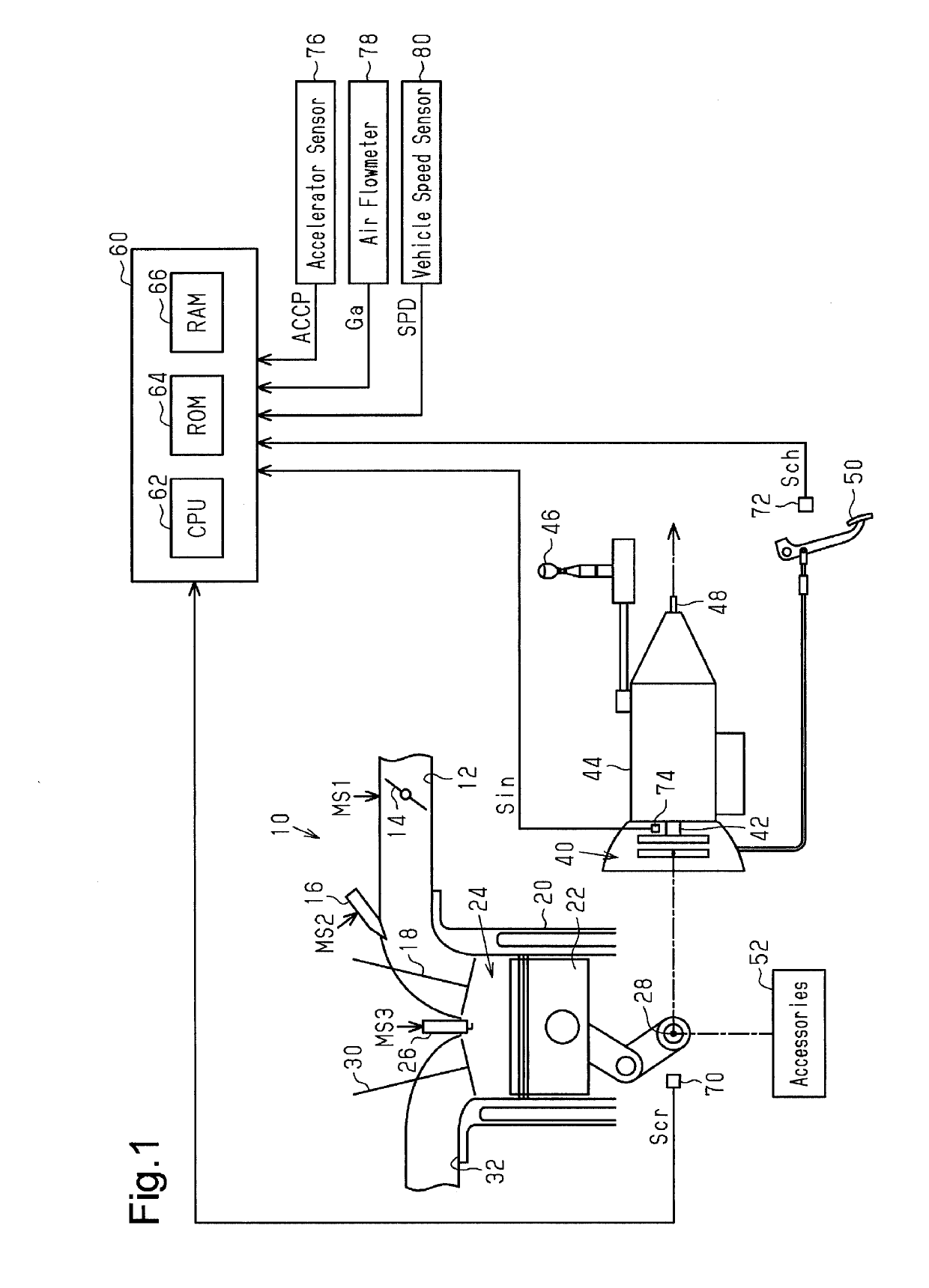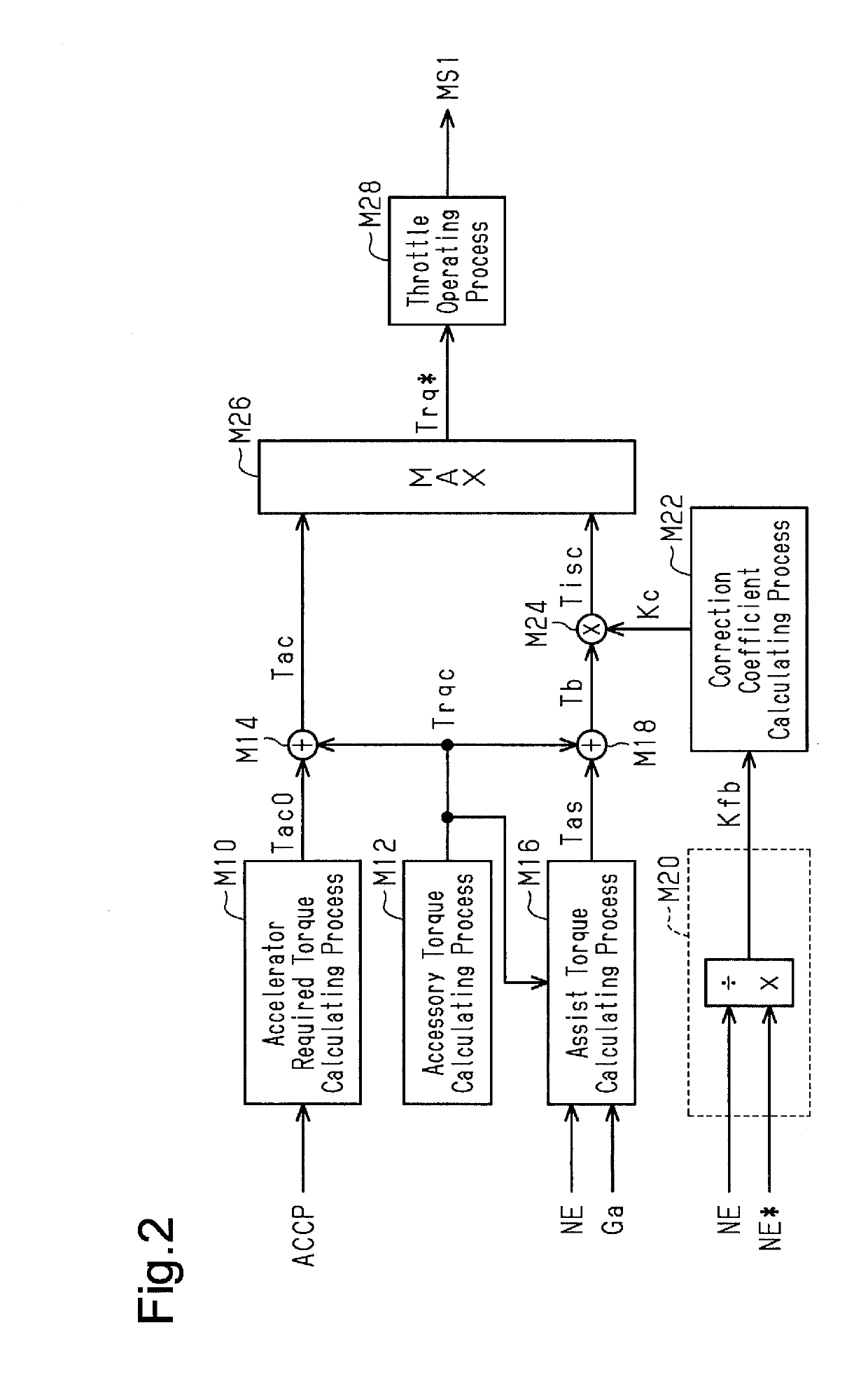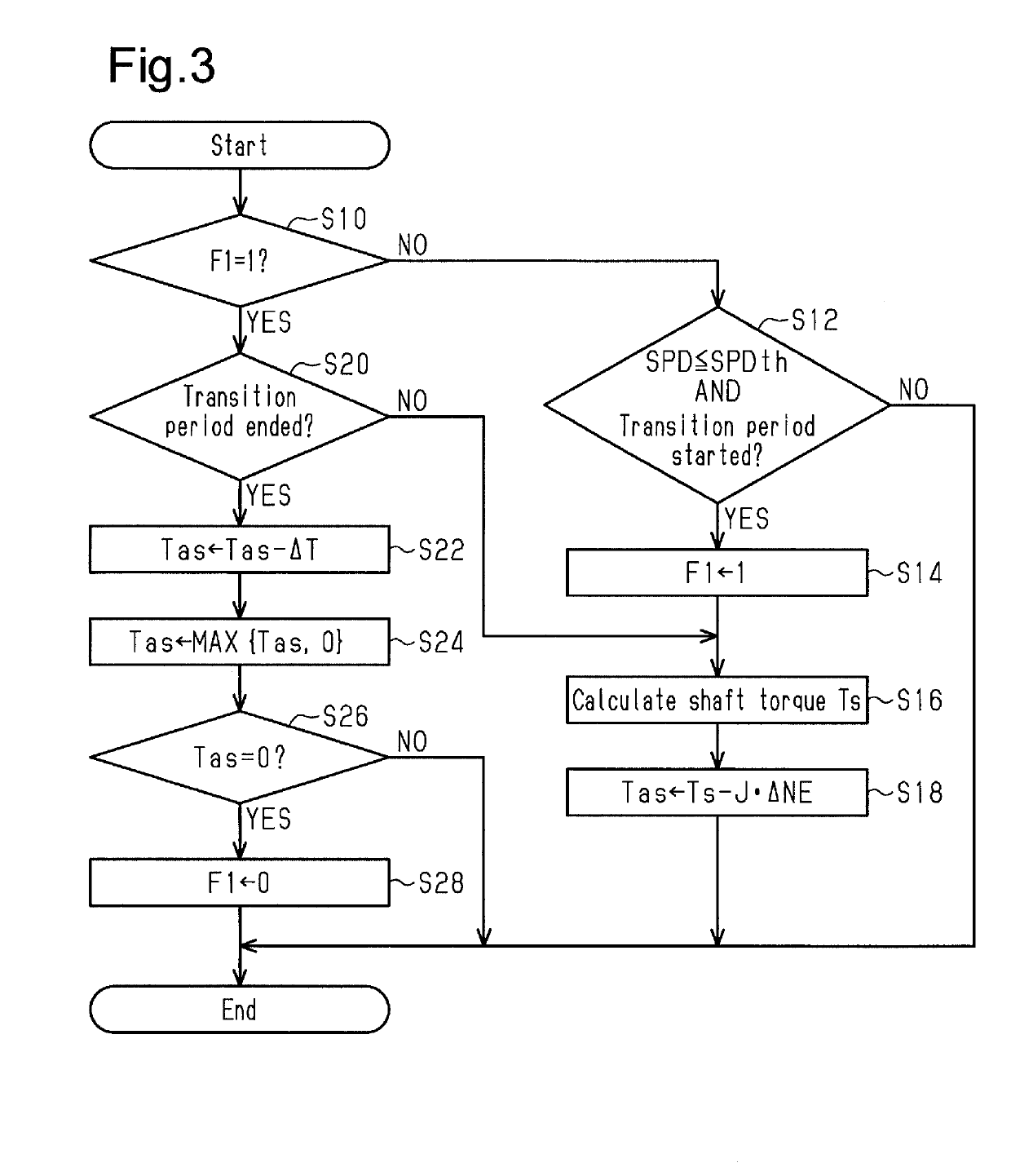Controller and control method for internal combustion engine
- Summary
- Abstract
- Description
- Claims
- Application Information
AI Technical Summary
Benefits of technology
Problems solved by technology
Method used
Image
Examples
first embodiment
[0031]A controller for an internal combustion engine according to a first embodiment will now be described with reference to the drawings.
[0032]As shown in FIG. 1, the internal combustion engine 10 includes a throttle valve 14 arranged in an intake passage 12 and a fuel injection valve 16 provided downstream of the throttle valve 14. The fuel injected from the fuel injection valve 16 and the air drawn into the intake passage 12 flow into a combustion chamber 24, which is defined by a cylinder 20 and a piston 22, as an intake valve 18 is opened. The air-fuel mixture drawn into the combustion chamber 24 is burned by the spark discharge of an ignition device 26. The energy generated by combustion is converted into the rotational energy of a crankshaft 28 via the piston 22. The burned air-fuel mixture is discharged to an exhaust passage 32 as exhaust gas when an exhaust valve 30 is opened.
[0033]The crankshaft 28 is connected to an input shaft 42 of a manual transmission 44 via a clutch ...
second embodiment
[0069]A second embodiment will now be described with reference to the drawings. The differences from the first embodiment will mainly be discussed.
[0070]In the present embodiment, when the correction coefficient Kc is gradually decreased toward the feedback operation amount Kfb by setting the assist torque Tas to zero, the gradual decrease rate is set variably in accordance with the vehicle speed SPD.
[0071]FIG. 8 shows the relationship between the vehicle speed SPD and the decrease amount Δ2 according to the present embodiment. As shown in FIG. 8, the decrease amount Δ2 is set to a smaller value when the vehicle speed SPD is low than when the vehicle speed SPD is high in the present embodiment. As a result, the decrease rate of the correction coefficient Kc is smaller when the vehicle speed SPD is low than when the vehicle speed SPD is high. This configuration is aimed at preventing the user from having an impression of insufficient torque by reducing the gradual decrease rate of th...
PUM
 Login to View More
Login to View More Abstract
Description
Claims
Application Information
 Login to View More
Login to View More - R&D
- Intellectual Property
- Life Sciences
- Materials
- Tech Scout
- Unparalleled Data Quality
- Higher Quality Content
- 60% Fewer Hallucinations
Browse by: Latest US Patents, China's latest patents, Technical Efficacy Thesaurus, Application Domain, Technology Topic, Popular Technical Reports.
© 2025 PatSnap. All rights reserved.Legal|Privacy policy|Modern Slavery Act Transparency Statement|Sitemap|About US| Contact US: help@patsnap.com



